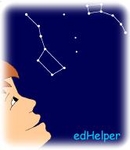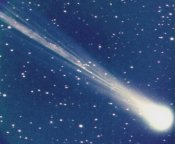
Worksheets and No Prep Teaching Resources
Reading Comprehension Worksheets
Space and Stars

Space and Stars
 Worksheets and No Prep Teaching Resources Reading Comprehension Worksheets Space and Stars |
 Space and Stars |
| edHelper's suggested reading level: | grades 6 to 8 | |
| Flesch-Kincaid grade level: | 6.24 |
|
Comets
By Cindy Grigg |

|
 1 Our solar system consists of the sun and the eight planets. But that's not all. Comets also are bound by gravity to orbit around our sun. They are part of the solar system, too.
1 Our solar system consists of the sun and the eight planets. But that's not all. Comets also are bound by gravity to orbit around our sun. They are part of the solar system, too. |
Create Weekly Reading Books
Prepare for an entire week at once! |
| Leave your feedback on Comets (use this link if you found an error in the story) |
 |
Space and Stars
|
 |
Science
|